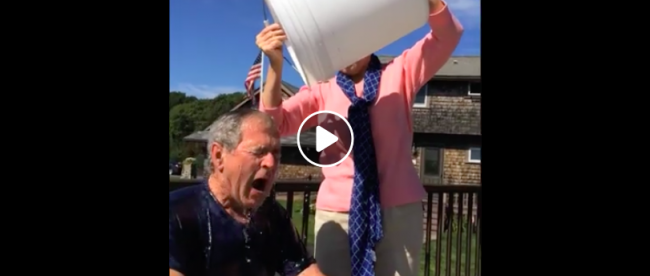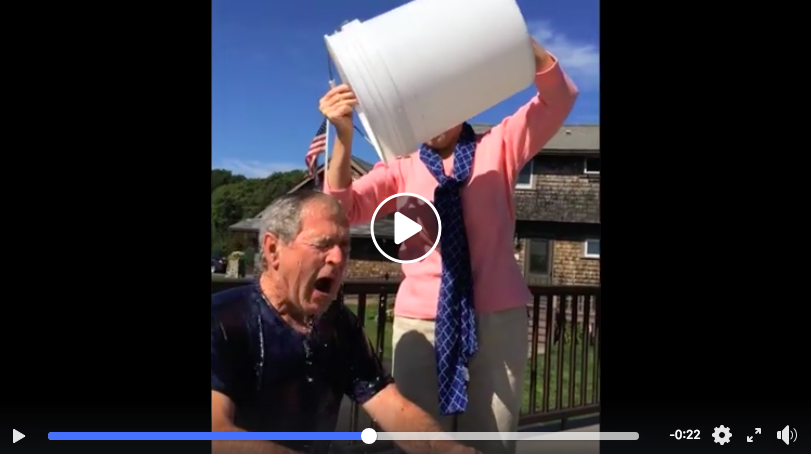How a Silly Social Media Thing Helped Break the Ice

In the summer of 2014, millions of people around the world lost their collective minds and decided to dump buckets of ice water on our heads. Well, it was for a good cause, right?
The Ice Bucket Challenge, if you didn’t live through it, is probably the most notable social media awareness campaign to date. The origins are a little murky — this Slate article is probably the best effort to figure that part out — but the rules were pretty simple. If a friend nominated you to take the Ice Bucket Challenge, you had two choices. One, you could write a check to the ALS Association, an organization dedicated to fighting amyotrophic lateral sclerosis (ALS), a neurodegenerative disease which causes the brain to, over time, lose motor control over the body. Or two, you could take a big bucket of ice water and dump it on your head, and then post a video of your reaction to Facebook, Twitter, or the like — and then challenge a group of friends to do the same. (Many people both donated and took the ice bath.)
Over the course of those summer months, the Ice Bucket Challenge spread widely; more than two million Ice Bucket videos were posted to Facebook during that time period. Many celebrities and the like got in on the action, too. For example, more than a million people watched former U.S. President George W. Bush find himself on the wet end of an upside-down bucket of water (and yes, he wrote a check, too).
But the Ice Bucket Challenge wasn’t just silly.
It worked.
The Ice Bucket brigade raised more than $115 million for the ALS Association, a huge amount by any measure. (To give some context, though, the Association claimed only about $20 million in individual donations the entire year prior.) The Association has been chronicling how they’ve invested that money on their website, here, and you’ll see that the lion’s share — nearly $90 million — has gone toward research. And in the summer of 2016, the Association announced that the Ice Bucket money has already made a difference: it was used to make a key discovery in the fight against ALS.
About $1 million of the Ice Bucket money went to an organization called Project MiNE, an international effort to map the DNA of people with ALS. Project MiNE aims “to map the full DNA profiles of at least 15,000 people with ALS and 7,500 control subjects, and to perform comparative analyses on the resulting data.” These efforts matter because there is a widespread belief in the scientific community that ALS has a genetic component; if we can find the genetic causes of ALS, we can potentially develop more effective treatments. And with the grant from the ALS Association, Project MiNE was able to begin what the Association called the “largest-ever study of inherited ALS.”
That investment paid dividends. In July of 2016, as the Guardian reported, Project MiNE announced that they “identified a new gene associated with the disease.” The gene, called NEK1, “helps nerve cells maintain their shape and repairs DNA,” according to Popular Science. But, Popular Science continues, the Project MiNE team found that “variations of this gene are involved in three percent of ALS cases,” suggesting that there’s a causal link between the two. For those in this category, that discovery is very welcome news; as the BBC notes, “the identification of gene NEK1 means scientists can now develop a gene therapy treating it.”
So while you were laughing at your friends for dumping ice water on their heads — or while you were toweling off after doing it yourself — it turns out, you were actually helping make the world a better place at the same time. Even if it felt silly in the moment.
Bonus fact: ALS is also often called Lou Gehrig’s Disease, named for the Hall of Fame baseball player who was diagnosed with it in 1938, his sixth-consecutive season as an All-Star. Gehrig’s career was notable in part because he never missed a game; he played 2,130 consecutive games, only sitting due to what was believed to be ALS. (That was a record until September 6, 1995, when Cal Ripken, Jr. of the Baltimore Orioles topped it.) Gehrig may not have had ALS after all, though; his condition may have been brought on by repetitive head injuries. As PBS explains, “on numerous occasions, he was “beaned” by an errant pitch or hit in the face by ground balls, suffered repeated concussions, episodes of loss of consciousness, and other forms of head trauma, without the slightest protection, beyond wearing a woolen baseball cap.” Since Gehrig’s death, per the Harvard Medical School Health Blog, researchers have found that repeated head trauma can result in symptoms which are similar to ALS, calling into question whether Gehrig actually had the disease which bears his name.
From the Archives: Swing and a Miss: Meet the young woman who struck out Lou Gehrig — right before she struck out Babe Ruth.

